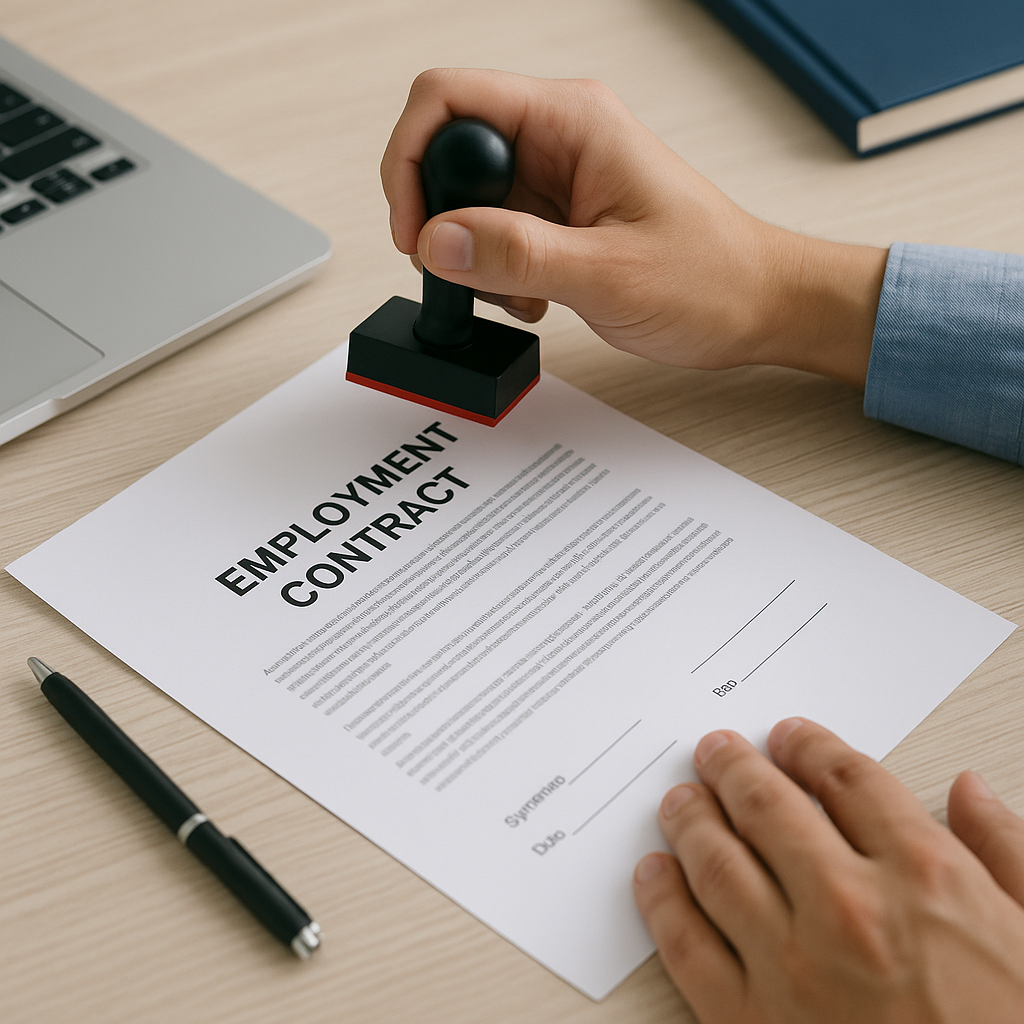This post is also available in:
Bahasa Malaysia
What Employers and HR Teams Need to Know
If you’re an employer or HR professional in Malaysia, there’s one detail you shouldn’t overlook when formalising employment: stamping the employment contract. While many businesses are still catching up with this requirement, failing to stamp employment agreements can have legal implications.
In this post, we’ll break down:
- When stamping became a priority
- What types of contracts must be stamped
- How to get them stamped
- What to do about contracts signed before enforcement

Update – 6th June 2025
LHDN has exempted the requirement for employment contracts signed before 1st Jan 2025 to be stamped.
Employment contracts signed from 1st January 2025 are still required to be stamped, and penalties will be waived if it is completed by the end of December 2025.
From 1st Jan 2026, it is mandatory for employment contracts to be stamped within 30 days of signing or will incur penalties of RM100.00 or 20% of the duty, whichever is higher.
When Did the Stamping Requirement Come Into Effect?
The requirement for stamping employment contracts has always existed under the Stamp Act 1949. However, it wasn’t actively enforced — until 1 January 2021.
Since then, the Inland Revenue Board (LHDN) has stepped up enforcement, making it mandatory for employers to stamp all new employment contracts to ensure compliance.
Which Employment Contracts Must Be Stamped?
Under Malaysian law, any written employment contract must be stamped. This includes:
- Permanent employment contracts
- Fixed-term and project-based contracts
- Probationary agreements
- Internship or training agreements
- Part-time or freelance contracts, if formalised in writing
In short: if it’s a written agreement that defines the terms of employment, it needs to be stamped.
What’s the Cost?
The stamp duty is RM10 per contract copy.
It applies regardless of salary, duration, or seniority.
Most employers prepare two originals: one for the employer and one for the employee — both should be stamped.
How Do You Get a Contract Stamped?
There are two simple options:
1. Manual Stamping at LHDN
- Bring the signed contract to your nearest LHDN Stamp Office
- Pay RM10
- Receive the official stamp endorsement
2. e-Stamping via LHDN STAMPS Portal
- Register or log in at STAMPS, LHDN’s stamp assessment and payment system.
- Upload the contract
- Fill in contract details
- Make payment online
- Download the digitally stamped contract
Deadline: Stamp within 30 days of signing to avoid penalties.
What About Contracts Signed Before 2021?
Technically, all written employment contracts are subject to stamping — even those signed before 2021. But here’s what you need to know:
- LHDN does not currently require backdated stamping of old contracts (unless presented in legal proceedings)
- You can still stamp older contracts, but late penalties may apply:
- RM5 to RM100 depending on delay
Best practice: Stamp any active or critical pre-2021 contracts, especially those that may be referenced in official matters.
Why Is Stamping Important?
Failing to stamp contracts can lead to:
- The contract being inadmissible in court
- Fines under the Stamp Act
- Perceived non-compliance in HR audits or immigration reviews
Stamping your employment agreements:
- Confirms legal enforceability
- Protects both employer and employee rights
Final Takeaway
If you’ve issued employment contracts without stamping them, now’s the time to fix it. For contracts signed from 1 January 2021 onward, stamping is not optional — it’s a legal requirement.